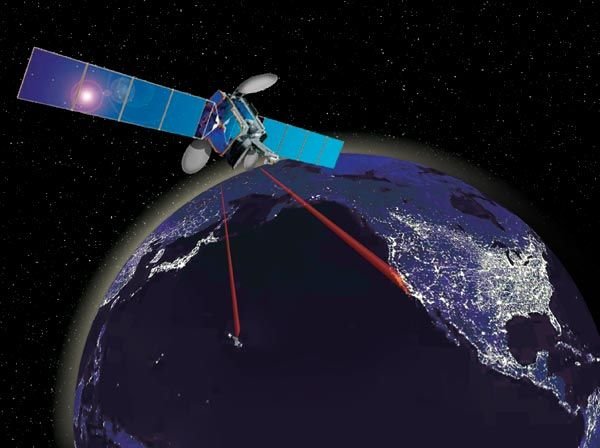With global missions to the Moon taking shape and private players planning to venture beyond to Mars, constant communication will be the key to survival for interplanetary missions. A new technology demonstration could ramp up communications as Nasa launches the Laser Communications Relay Demonstration (LCRD) mission on December 4.
The mission will showcase the unique capabilities of optical communications, which could be faster than radio waves. Space agencies currently use radio frequency communications to communicate with spacecraft traveling towards the planets, the Sun or even trundling on the surface of Mars. However, with more and more data generations happening with new missions, a more effective communication medium needs to be raised.
The LCRD mission will showcase the unique capabilities of optical communications to increase bandwidth for communicating in space while reducing size, weight, and power requirements. The mission will be launched on the Space Test Program Satellite-6 (STPSat-6), the primary spacecraft of the Space Test Program 3 (STP-3) mission for the Department of Defense.
WHAT IS LCRD MISSION?
The laser communication demonstration will be a first of its kind end-to-end laser relay system, sending and receiving data over invisible infrared lasers at a rate of approximately 1.2 gigabits per second from geosynchronous orbit to Earth. Nasa said that with the new system, bandwidth will increase between 10 to 100 times more than radio frequency systems.
The LCRD instrument has been installed onboard the US Department of Defense’s Space Test Program Satellite 6 (STPSat-6). Once in orbit, engineers will activate it and transmit data over infrared lasers. However, before the instrument fires actual lasers, engineers will practice sending test data to and from its ground stations. This test data will be sent up through radio frequency signals from the mission operations center and then the LCRD spacecraft will reply over optical signals.
The LCRD mission will be able to downlink data over optical signals at a rate of 1.2 gigabits per second. This is almost double the rates of the 2013 Lunar Laser Communications Demonstration, which downlinked data from the Moon over an optical signal of 622 megabits per second.
A major advantage will be the easy handoff of the signals from one station to another across the world as spacecraft moves around the planet, closer to it or pulls far away. Engineers had in 2013 conducted a 30-day Lunar Laser Communication Demonstration, which revealed that the possibility of expanding broadband capabilities in space using laser communications is possible.
For the demonstration this time, engineers will beam data between LCRD and optical ground stations located in Table Mountain, California, and Haleakal, Hawaii, once it is positioned more than22,000 miles above Earth.


